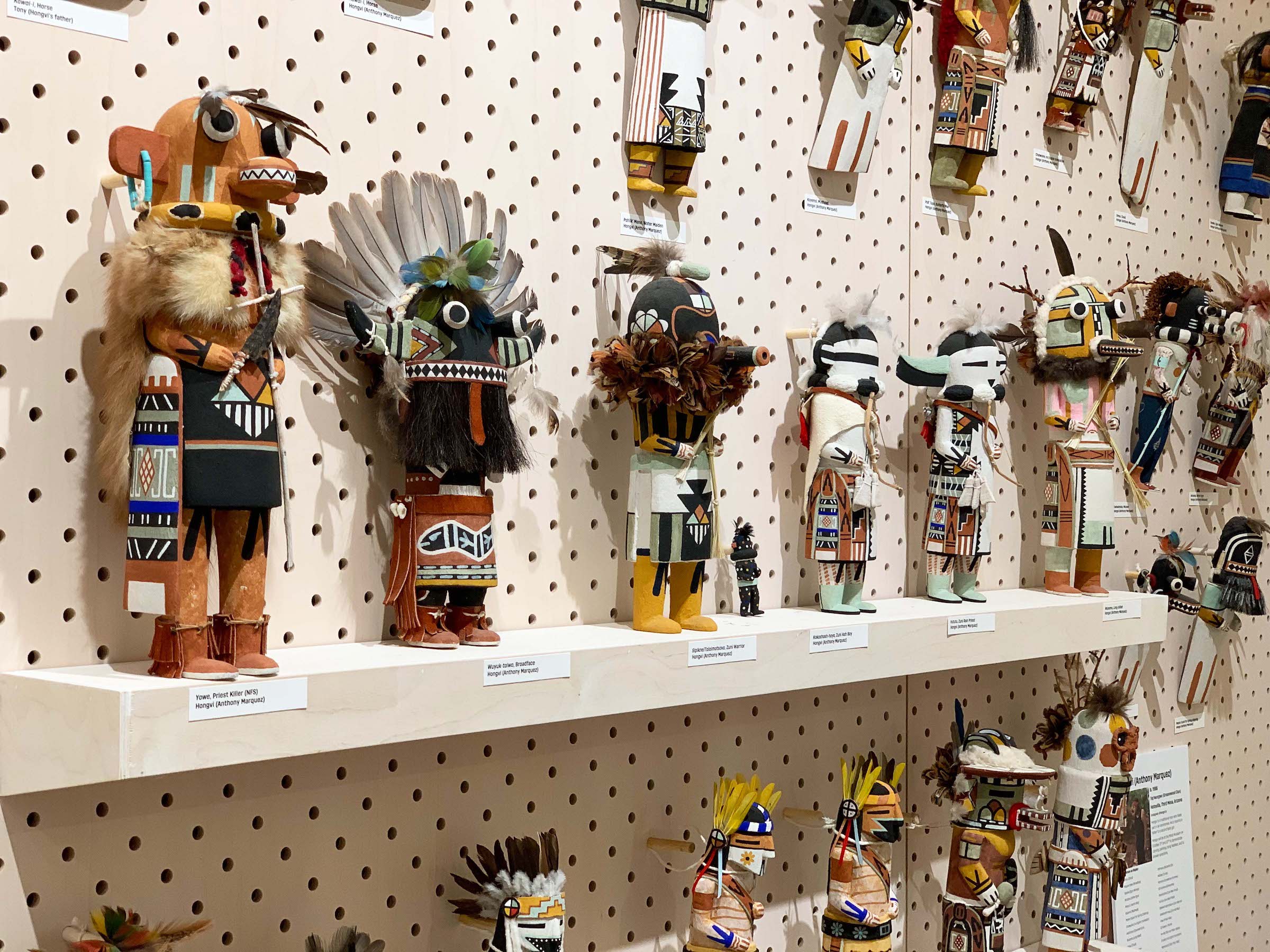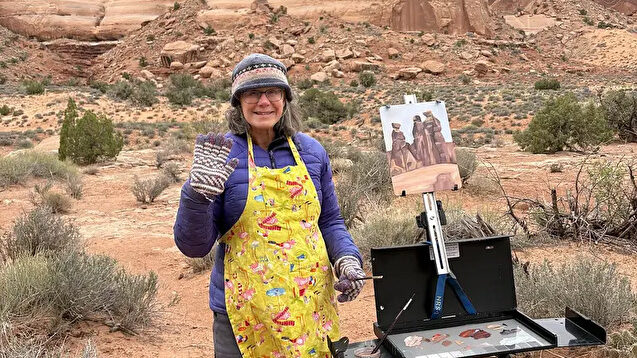Some information may be outdated.
The Moab Museum’s new exhibit, “Hopi Katsina: Evolving Styles, Enduring Meanings,” explores the cultural and artistic significance of “kachina dolls,” commonly sold as souvenirs. But to the Hopi and Zuni tribes, the carved wooden figures, “katsintithu,” embody Katsina, a religion and way of life.
For each month the exhibit is on display, from October to December, the museum will host Hopi artists and carvers to demonstrate how katsintithu are made, and to describe the meanings associated with them.
“You can’t know how to honor another culture until you get to know them, and they tell you how they want to be honored,” said Tara Beresh, curatorial and collections manager at the museum.
On Friday, Nov. 12 and Saturday, Nov. 13, artist Adam Suetopka will be at the museum to demonstrate his carving style. Based in Hotevilla, Third Mesa, Arizona, Suetopka is known for creating large pieces and applying a whitewash that brings out the woodgrain. He will also be introducing visitors to specific Katsina spirits that are depicted with the katsintithu.
Mary Langworthy, the museum’s membership and community outreach coordinator, said the exhibit is intended to remind people that Native communities and cultures are still very much alive and present. Katsina figures are commonly sold in gift shops, including shops in Moab, and so Langworthy hopes the exhibit can provide cultural context.
“The exhibit inspires wonder,” she said. “The carvings are so colorful and vibrant, and you’ll see a lot of people of all ages in awe.”
In October, Hopi artist Hongvi Marquez came to the museum to demonstrate his carving, painting, and feather-tying techniques. Marquez was at the museum for two days.
“Visitors got to see the whole process, going from a piece of wood to an intricately painted, detailed, really gorgeous and inspiring piece,” Langworthy said. “He graciously shared techniques, like how you carve carefully so you don’t remove too much wood, and how to have a sturdy hand, and also the bigger picture, of emotional connection and the spiritual process.”
With this exhibit, Beresh hopes to continue undoing mistakes that museums, including the Moab Museum, have done in the past in displaying Native artifacts without providing the cultural context for them, or sometimes even without the permission of Native people in the first place.
“I would like to try and set a new precedent for how we can better listen to Native American groups, and start contributing to healing,” Beresh said. She’s willing to put in the time it takes to do so—the Moab Museum is “starting from scratch,” she said, which allows it to make better curatorial choices.
She’s been working to consult with regional tribe members before the museum displays any ancestral objects in its possession—this will limit the number of objects displayed, she said, but provide an accurate story, as well as the Native perspective, on any ancestral objects in exhibits.
“I want to provide the public with the opportunity to see what is authentic, and understand that these objects mean something,” Beresh said.
Adam Suetopka will be at the museum for his carving demonstration on Nov. 12 and 13. In December, Shawn Deel, from Upper Munqapi, Third Mesa, Arizona, will do a carving demonstration on Dec. 10 and 11.
Event Info
What: Hopi Katsina Carving Demonstration
When: Friday, Nov. 12 and Saturday, Nov. 13 from 10 a.m. to 6 p.m.
Where: Moab Museum (118 E. Center St., Moab)
Admission: $10
Appreciate the coverage? Help keep local news alive.
Chip in to support the Moab Sun News.





